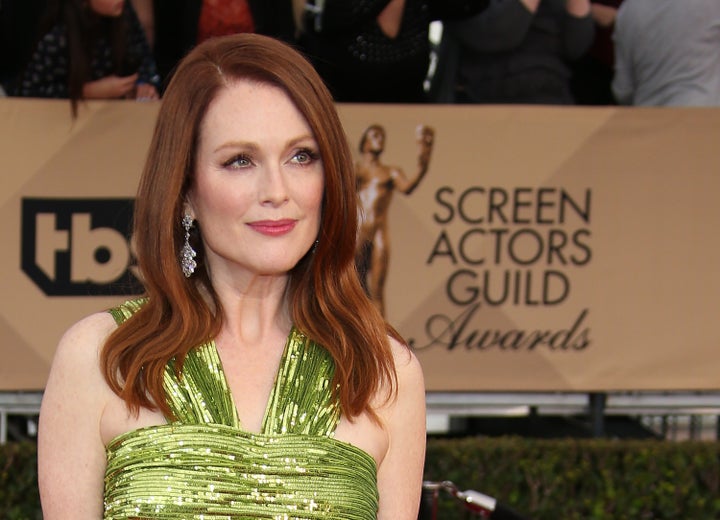What happens when the hair color that has defined a person starts to lose its vibrancy with age?
For most of my life, I felt my red hair made me unique. I was typically the only redhead in a room, and it was often the first thing people would comment on when meeting me. And I guess that’s not unusual since red hair is rare: It is estimated that people with red hair make up only 1-2% of the population, and it’s even rumored that redheads are set for extinction.
I heard a range of comments about my hair growing up. Some were nice, like my grandma reminiscing about how I had beautiful red curls as a baby. Or that I looked like a redhead celebrity, typically Amy Adams or Isla Fisher. But most comments weren’t as nice. The first time I heard the word “ginger,” it was in the context of: “Gingers have no soul.” When people would use the phrase “redheaded step-child,” they would immediately feel the need to apologize around me. As I got older and started dating, I heard even more distasteful comments about my hair from men, like, “I’ve always heard redheads are wild in bed, is that true?”
As unique as I felt having red hair, my experience as a redhead isn’t unique.
Because she was the only redhead in her family, 39-year-old Betsy Piland from Denver, Colorado, was told she was special. “I’ve always liked my hair, even through some middle school years of getting teased for it, getting called Pippi Longstocking or Raggedy Ann,” she said.

“My identity as a child was purely ‘redhead.’ That is what everyone noticed and commented on, for better or worse,” said 32-year-old Erin Benites from Dallas, Texas, another natural redhead. “I remember older women telling me they wished I had my hair color at least once a week. I think that played a big part in how I liked my red hair and identified with it. Strangers never commented on anything but my hair.”
Benites experienced her fair share of teasing: “I did get the typical nicknames like ‘Big Red,’ and even ‘Big Red bubble gum head,’ but they were never said with any spite. I thought (and still think) it’s funny.”
Taking a little longer to warm up to her red hair, 33-year-old Samantha O’Grady from Ottawa, Ontario, said, “First as a child, I hated everything about my red hair and would be called names. That stopped around middle school … and people started complimenting me on my hair.”
O’Grady saw more comments on her hair in the world of online dating. “As I grew older, I got the same gambit that a lot of young women get: the sexual jokes, the nicknames, the weird fetishization of my hair. Tinder dudes popping into my DMs telling me they’d always had a thing for redheads.”
The teasing isn’t where the similarities between myself and these other redheads end. Between our 20s and 30s, we all experienced the same phenomenon: Our hair started fading.
“About 40% of all my clients are redheads,” said Carlina Ortega of Rita Hazan Salon in New York City. “Of the 40%, I’d say about half were natural redheads whose color has faded over the years.” And there’s a reason why.

“Natural redheads and blondes are born with hair whose cells produce a pigment called pheomelanin,” Ortega explained. “As we age, we produce more eumelanin, which leads to the hair darkening.“
Redheaded sisters Adrienne and Stephanie Vendetti have made their career out of being natural redheads and are very familiar with red hair losing its vibrancy. When it comes to fading red hair, “This topic is the #1 most asked question from our followers,” Adrienne said. Their website and book, “How to Be a Redhead,” discusses beauty and fashion for redheads, and of course, how to manage fading red hair. Stephanie has even experienced fading herself: “When I hit my mid-20s, I noticed my red hair was becoming dark and brassy. I started having strangers ask me if my hair was red or brown. It made me SO upset. I wanted to scream, ‘I am a redhead!’”
It isn’t easy to recreate natural red hair, even when a person used to have it. “The thing with natural redheads is that there are so many different colors in the hair,” said Alison Campbell of Fox and Jane Salon in New York City, “That’s what creates such gorgeous tones. It makes it very hard to appear natural when coloring.”
“After you create this beautiful color, it’s also the hardest color to keep. Reds are the fastest to fade and the hardest to remove. So if you decide you want to go red, make sure you are ready for the maintenance and commitment,” Campbell warned.
“I felt that if I don’t have red hair, then there is nothing special about my appearance.”– ERIN BENITES
I would like to say I’ve now accepted my dirty blond hair with a hint of red in it. But I haven’t. I still want my vibrant red hair and the compliments that I only got along with it. I’ve found a combination of semipermanent colors that I put in my hair every three months to keep some semblance of red hair.
How have others fared after their hair faded?
“I first noticed my red color fading in my mid-20s. I’ve mostly come to terms with the fading, but it still stings when I say something about being a ginger and the other person says, ‘You’re a redhead?’” Piland said. “I don’t know if people with other hair colors feel so strongly about it as part of their identity, but I certainly do.”
“Whenever I’m feeling a little meh, I get a semipermanent gloss from my stylist,” she added. “It makes my hair look and feel super healthy, and the color is really natural-looking. It’s a nice pick-me-up.”
Benites also had hair that started fading in her 20s, and the kids she works with would tell her she had brown hair. “I have always been a redhead, and that actually hurt my redhead pride,” she said. “I felt that if I don’t have red hair, then there is nothing special about my appearance.”
After trying multiple solutions to bring back the vibrancy of her hair, Benites found henna worked perfectly for her hair. “I feel more like me with red hair. I am so happy I had my red hair for my wedding day, and I plan on sticking with the henna until the upkeep is too much or there is enough silver to shine through,” she said.
O’Grady is accepting her fading hair better than others. “I noticed it started to fade significantly after I turned 30 and I was into it. I thought of it as a next phase or step. Now I’m not a ‘redhead,’ but a strawberry blonde! I can’t wait for it to fade completely and go all white so that I can walk around with flowing locks like I’m Gandalf.”
For those who aren’t as accepting of their loss of redheaded identity as O’Grady, Stephanie Vendetti has tips for maintaining color and vibrancy. “It really depends on your hair shade, age, genetics and whether you’re in the sun or not (the sun can cause your red hair to fade).”
“To really prevent fading, always cover your red hair in the sun and spray hair-SPF when you’re outside!“ she recommended.
I’ll keep using my semipermanent rinse until it stops working and then I’ll decide what to do. But no matter my hair color, I’ll always be a redhead ― I think we all will.
Credit: Source link